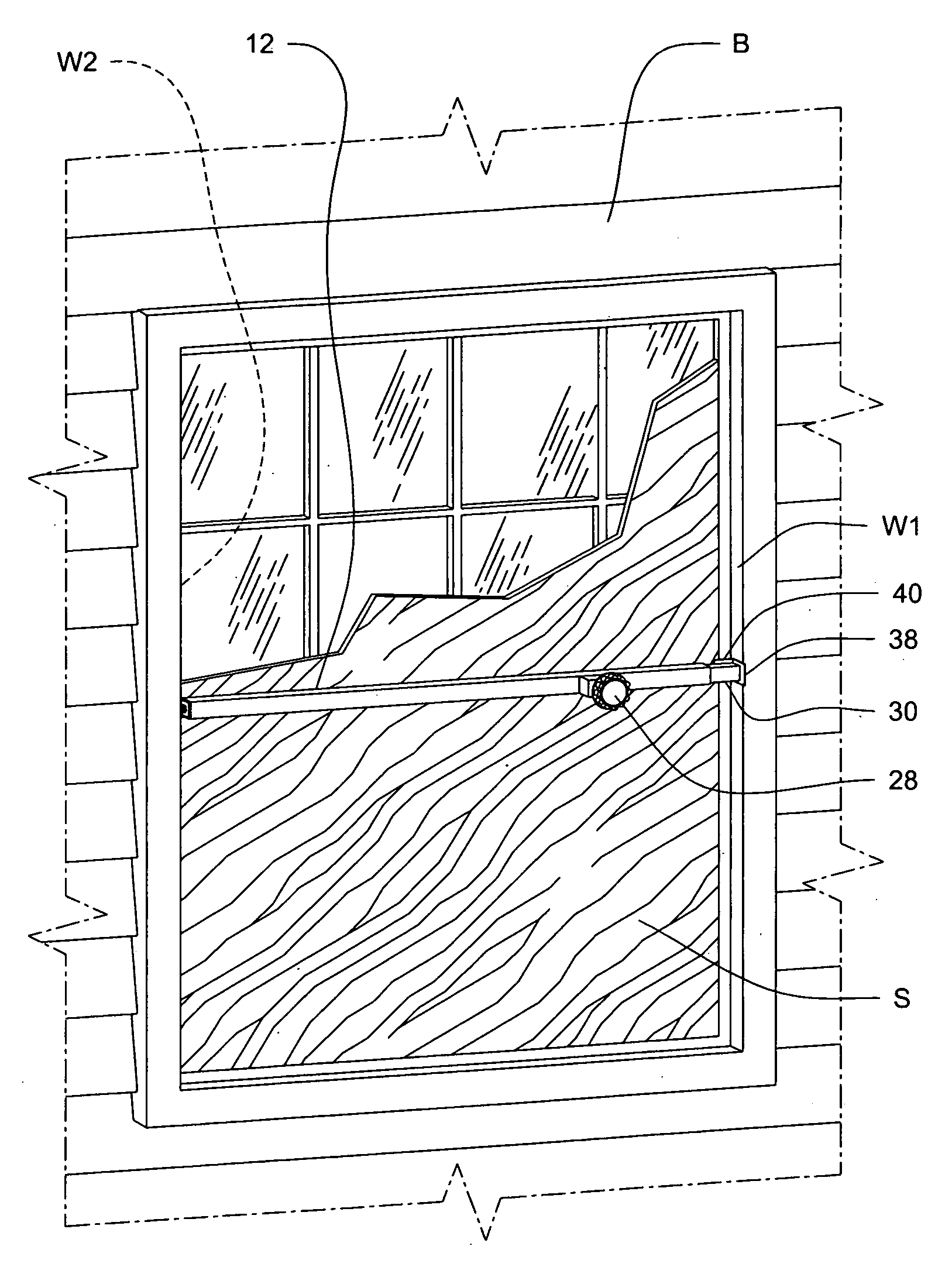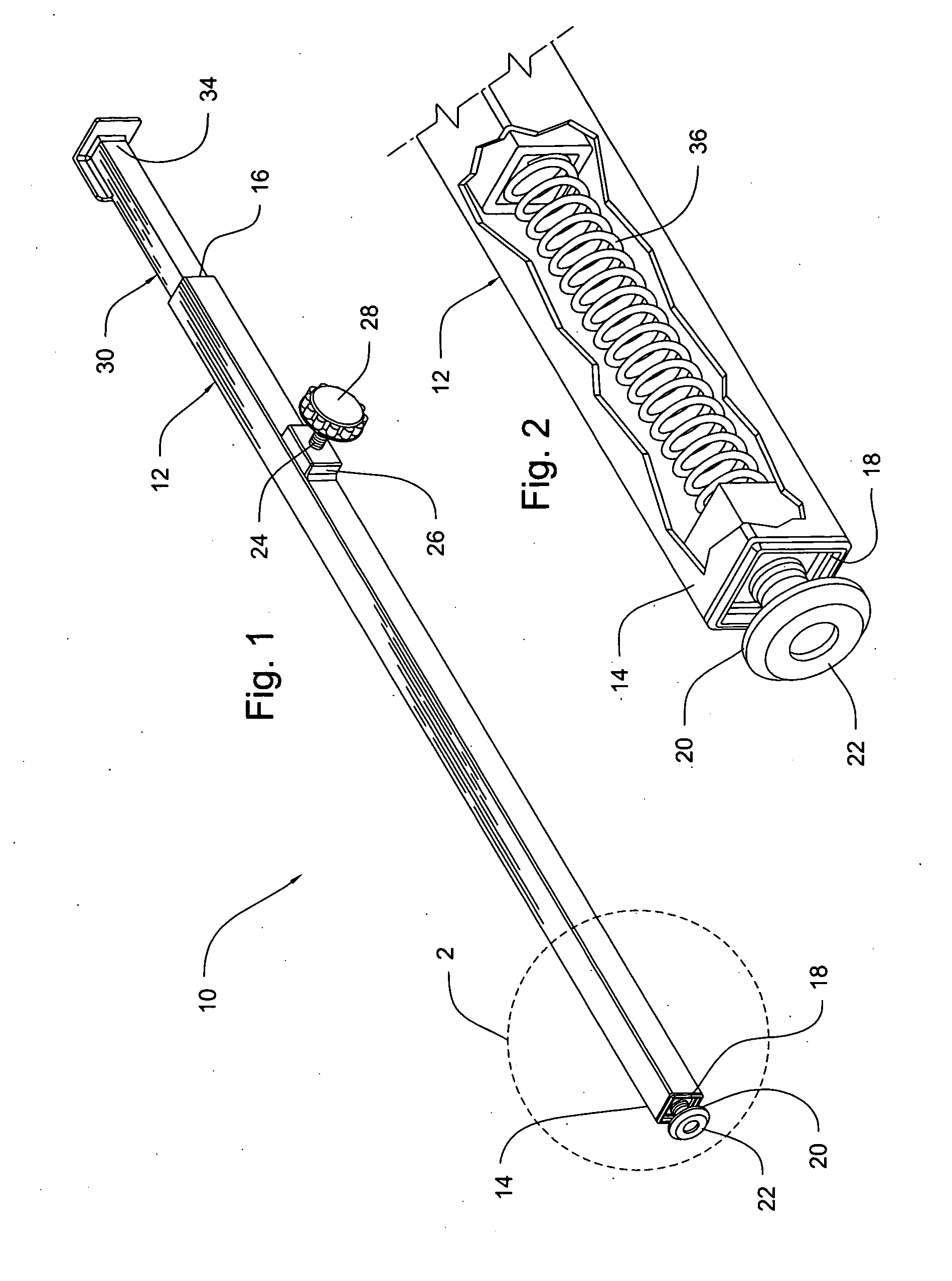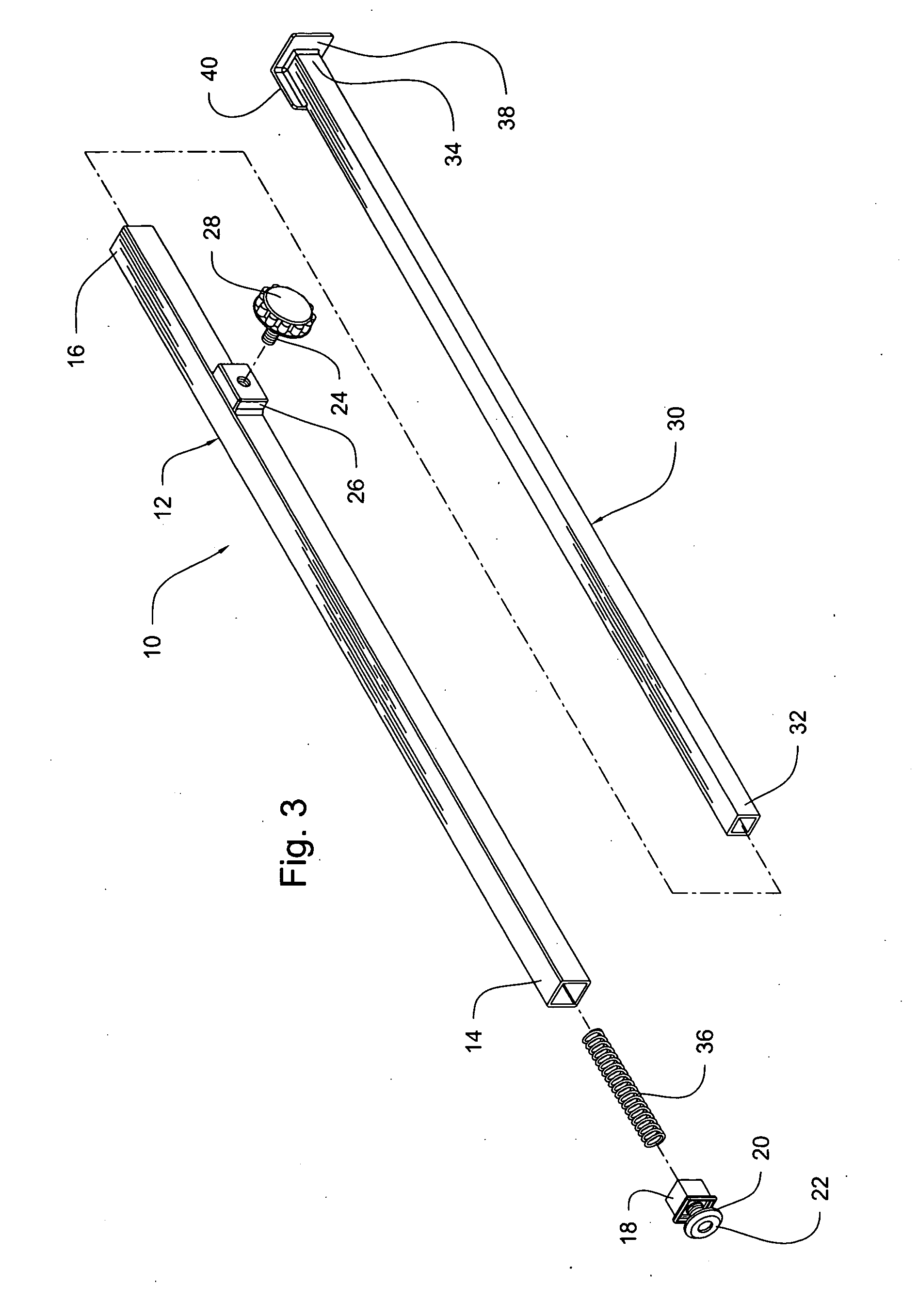Storm shutter retention bar
a technology of shutters and bars, applied in shutters/movable grilles, building locks, constructions, etc., can solve the problems of many windows including windows within doors that can fail, windows and glass laden doors weakest points of any building, etc., and achieve the effect of simple design and construction, quick and easy us
- Summary
- Abstract
- Description
- Claims
- Application Information
AI Technical Summary
Benefits of technology
Problems solved by technology
Method used
Image
Examples
Embodiment Construction
[0016]Referring now to the drawings, it is seen that the storm shutter retention bar of the present invention, generally denoted by reference numeral 10, is comprised of a first hollow tubular member 12 that has a closed first end 14 and an open second end 16. The closed first end 14 of the first tubular member 12 may be either monolithic and / or integral with the remainder of the first tubular member 12, or as seen, an end cap 18 may be attached, removably or otherwise, to the first tubular member 12 in order to create the closed first end 14. A foot 20 is threadably attached to the end cap 18 (or directly to the first end 14 of the first tubular member 12 in the case of monolithic and / or integral construction). The foot 20 is capable of pivoting and may have a non-slip tip 22 on its end. The diameter of the foot 20 is no greater than the outer diameter of the first tubular member 12. A shaft 24 threadably passes through the first tubular member 12. As the walls of the first tubular...
PUM
 Login to View More
Login to View More Abstract
Description
Claims
Application Information
 Login to View More
Login to View More - R&D
- Intellectual Property
- Life Sciences
- Materials
- Tech Scout
- Unparalleled Data Quality
- Higher Quality Content
- 60% Fewer Hallucinations
Browse by: Latest US Patents, China's latest patents, Technical Efficacy Thesaurus, Application Domain, Technology Topic, Popular Technical Reports.
© 2025 PatSnap. All rights reserved.Legal|Privacy policy|Modern Slavery Act Transparency Statement|Sitemap|About US| Contact US: help@patsnap.com



